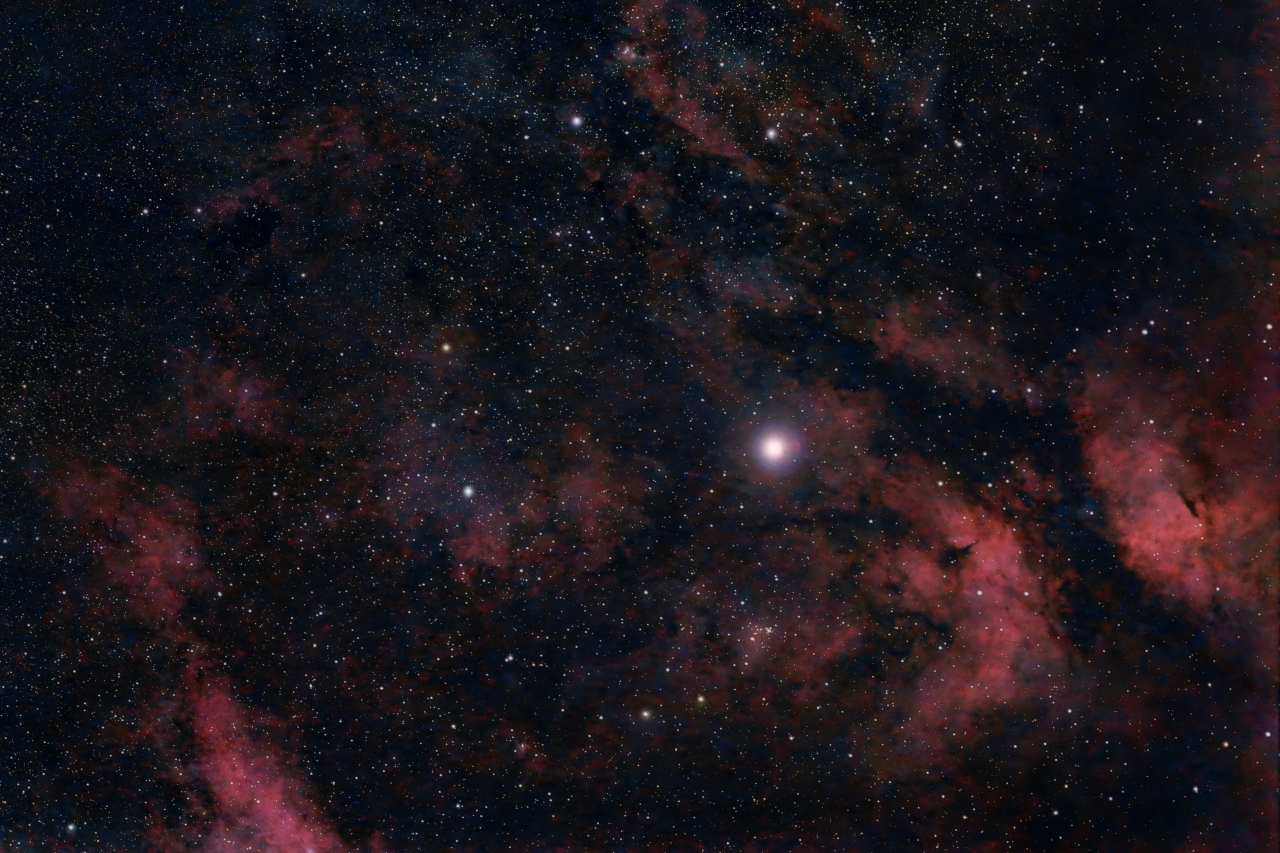Gamma Cygni Region
Belleville, MI
06/23/25
The Gamma Cygni Region – A Stellar Crossroads in Cygnus
Visible in high eastern sky during the evening hours of summer, the Gamma Cygni region, centered around the bright star Sadr (γ Cygni), is a spectacular and richly layered expanse of emission nebulae, dark clouds, and star-forming activity located deep in the heart of the Cygnus constellation. Nestled within the Cygnus Star Cloud, this region glows with the light of energized hydrogen gas and is interlaced with intricate dust lanes that both obscure and enhance the beauty of the surrounding nebulae.
Distance and Size
- Distance to the nebulae: ~4,500 to 5,000 light-years (Gamma Cygni itself is much closer, at ~1,800 light-years)
- Apparent Size: Covers over 2 degrees of sky (~four full Moons across)
- Actual Size of nebular region: Estimated to span 50–70 light-years
Despite the region being named for the star Gamma Cygni (Sadr), the bright yellow-white supergiant itself is not physically associated with the surrounding nebulae—it lies in the foreground and merely silhouettes against the background glow of more distant gas and dust.
Nebulae and Structure
The area is home to a complex of overlapping emission nebulae, most notably:
- IC 1318, also known as the Sadr Region Nebula, often divided into IC 1318A, B, and C
- The Butterfly Nebula (not to be confused with the planetary nebula of the same name in Scorpius), referring to the bright, wing-like structure in IC 1318B
- A number of dark nebulae including Lynds Dark Nebula (LDN) 889 and 900, which carve winding black filaments and rifts through the glowing background
These glowing clouds consist mostly of ionized hydrogen (H II regions), lit up by the powerful radiation from young, massive stars forming within or nearby. The intricate combination of glowing emission and dark dust lanes gives the region a vivid, high-contrast appearance, especially in narrowband imaging using Hα, [O III], and [S II] filters.
Star Formation and Ionizing Sources
Though Sadr (γ Cygni) is a F8 supergiant with about 33,000 times the Sun’s luminosity, it is not the primary ionizing source for the IC 1318 nebulae. Instead, the nebular glow likely originates from hot, massive O- and early B-type stars embedded deep within the region—particularly those associated with the Cyg OB9 and OB2 associations, two of the largest concentrations of young, massive stars in the Milky Way.
- Estimated ionizing star types: O5 to B0
- Temperatures: 30,000–45,000 K
- Ultraviolet output: Tens to hundreds of thousands of times greater than the Sun
These stars generate intense UV radiation and stellar winds that ionize the surrounding gas and shape the complex arcs, filaments, and shock fronts visible in deep-sky images.
The Cygnus Rift and Dust Lanes
A significant feature of the region is the Cygnus Rift, a massive and relatively nearby band of interstellar dust that bisects the Milky Way in the Cygnus area. This dark structure overlays the brighter emission nebulae behind it, contributing to the rich interplay of shadow and light. It adds dramatic silhouettes and enhances the three-dimensional appearance of the Gamma Cygni region.
Project Details
-
Belleville, MI
-
ZWO FF65 telescope with .75 reducer: FL=308mm, f4.8, Pentax K3ii, iso320, 4 minute subs, 4h13m integration time



